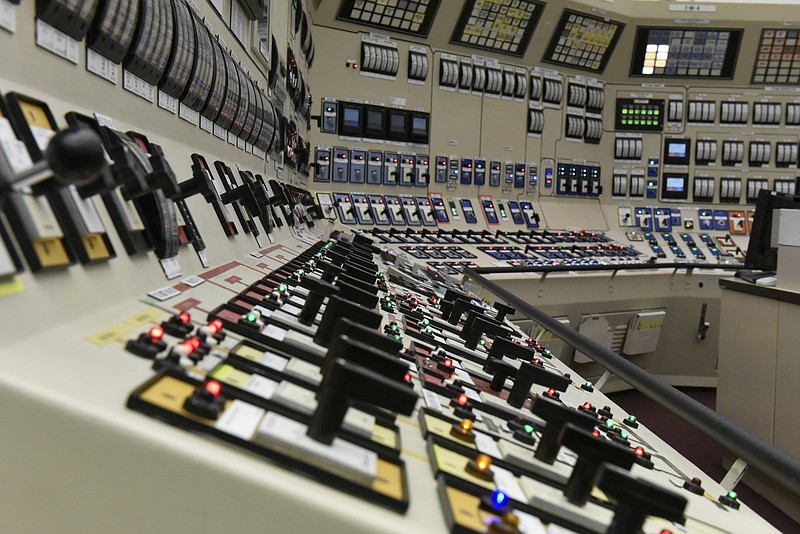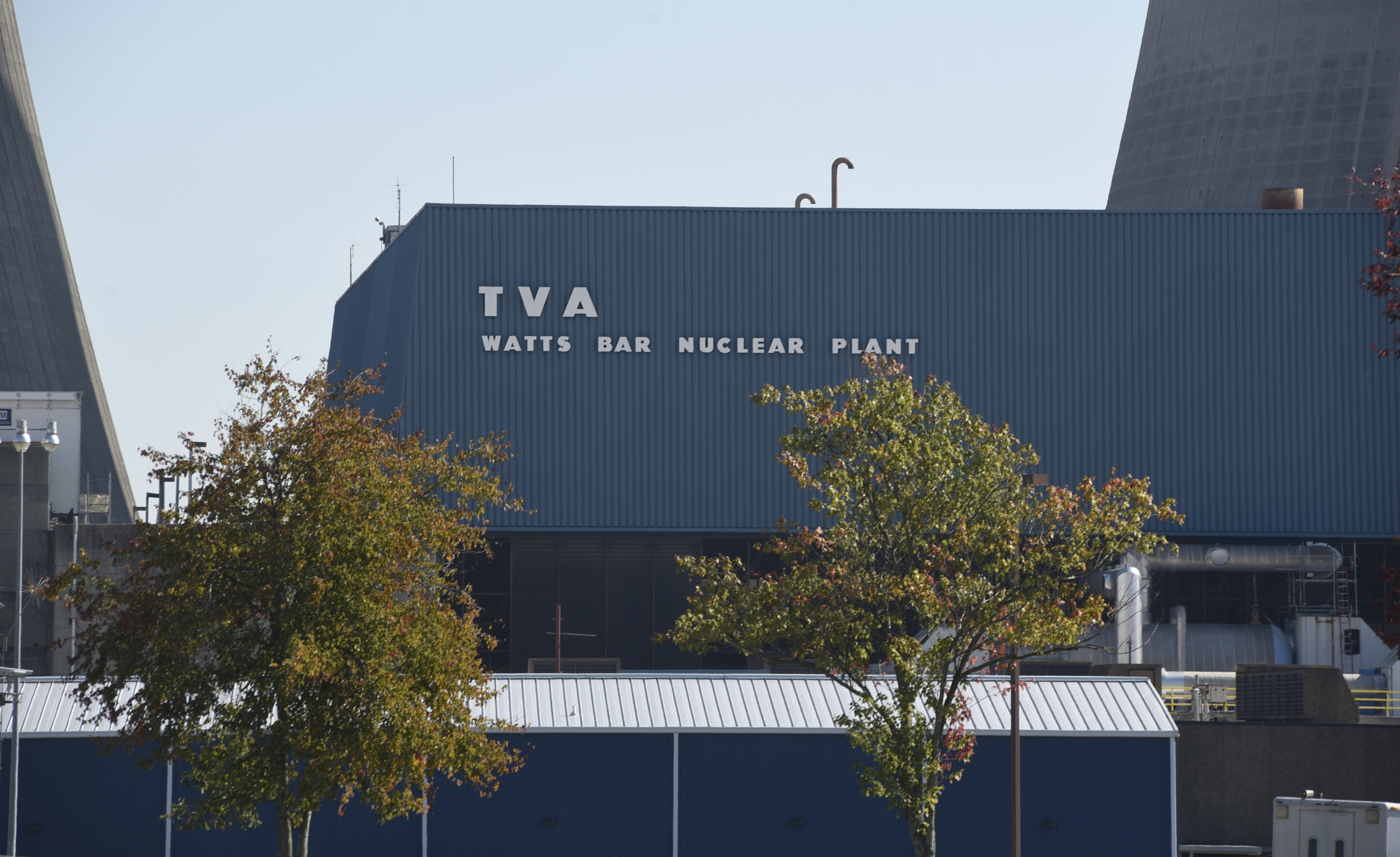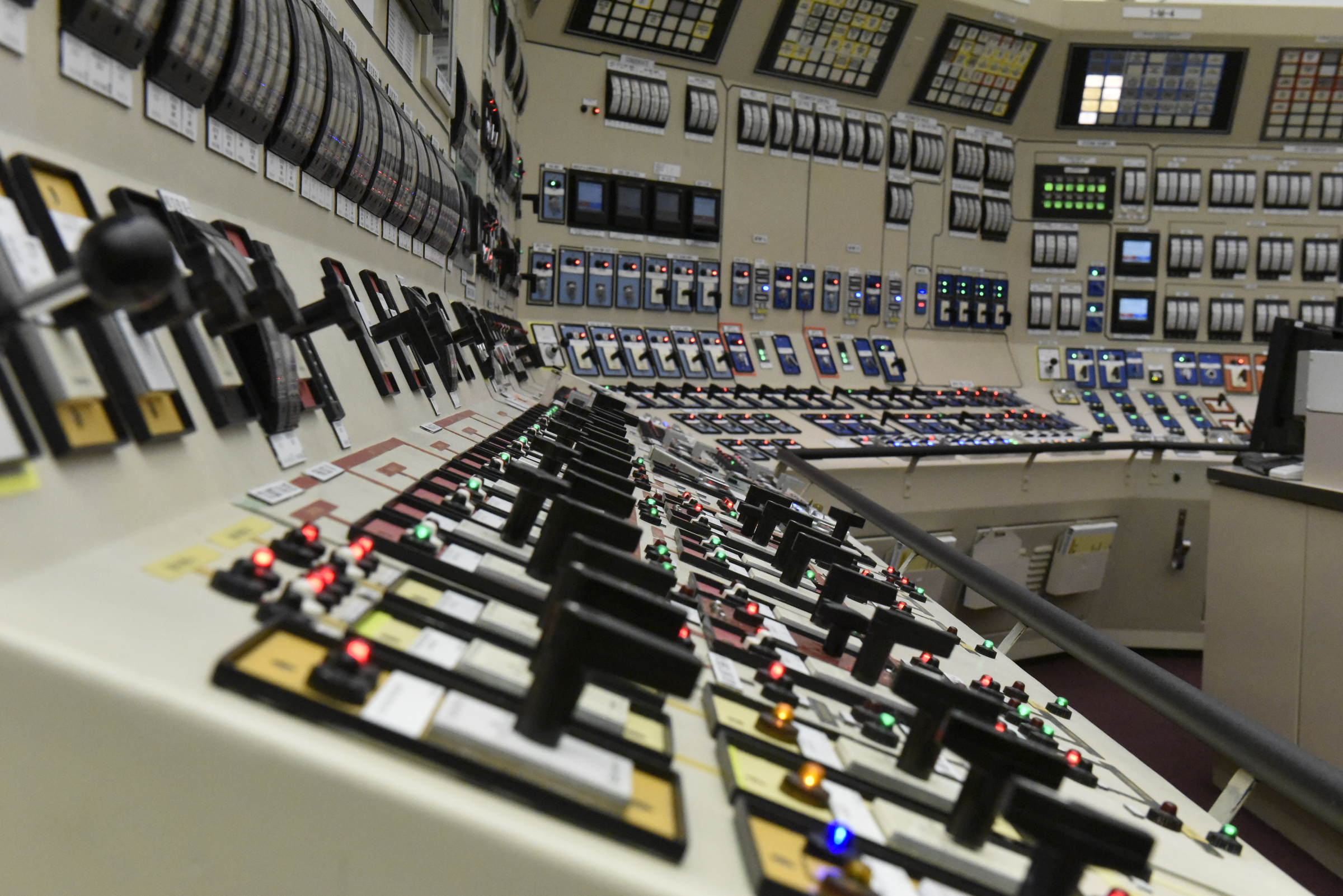About Watts Bar
History: Construction began in 1973Design: Westinghouse pressurized water reactors built within ice condenser reactor buildingsLocation: 1,700 acres on the northern end of the Chickamauga Reservoir near Spring CityPower capacity: Each unit produces about 1,150 megawatts of electricity — enough to service 650,000 homesStaff: Watts Bar has about 1,000 permanent employees, and its staff increases with temporary workers during construction and refueling outagesDistinction: Unit 1 began operation in 1996 as the last commercial nuclear plant licensed in the 20th century and unit 2 is the first to be licensed in the 21st century.
Read more
* Watts Bar Nuclear Plant passes critical tests to ready Unit 2 for power generation * Watts Bar Unit 2 reactor passes key equipment tests * TVA says Watts Bar Unit 2 'substantially complete'
SPRING CITY, Tenn. - Nearly 43 years after construction began, the Unit 2 reactor at the Watts Bar Nuclear Plant got an operating license Thursday to become the first new American nuclear power plant added to the electric grid in nearly two decades.
The staff of the U.S. Nuclear Regulatory Commission said the TVA unit is ready to load nuclear fuel and begin power generation by the end of the year. The startup of a second reactor at Watts Bar, which comes 19 years after America's last new nuclear unit began power generation also at Watts Bar, cost TVA more than $6 billion over four decades of starts and stops during its construction.
Although the cost of the new unit will initially push up the average expense of TVA-generated power, TVA President Bill Johnson said Watts Bar Unit 2 should provide the agency clean and reliable power, potentially for the next 80 years if TVA can get license extensions for it.
"Completing Watts Bar Unit 2 was a sound business decision made for the long-term good of the Tennessee Valley," Johnson said Thursday after announcing the new license for the plant. "This is a carbon-free, clean and reliable source of power, and its costs over time should remain fairly stable, even as other fuels and power sources become more expensive."
Nuclear power advocates said the completion of the long-delayed unit - even in the face of changing regulations after the Three Mile Island accident in Pennsylvania in 1979 and the Fukushima plant meltdown in Japan in 2011 - shows that the nuclear industry is building new plants safer and better than in the past.
"This is essentially a new plant built on an existing platform," said Mike Skaggs, the 55-year-old nuclear engineer who helped shepherd the final $4.5 billion completion leg over the past five years. Skaggs has previously helped in the startup of three other nuclear plants, and he insists the industry is getting better and plants are designed to be more safe than in the past.
TVA Nuclear Chief Joe Grimes said the completion of a second unit at Watts Bar - the seventh reactor in TVA's nuclear portfolio - will boost nuclear generation to more than 35 percent of TVA's power mix, "instilling confidence in TVA and the nuclear industry."
Each of the Watts Bar units produce 1,150 megawatts, or enough power for about 650,000 homes.
But nuclear power critics questioned TVA for celebrating the new Watts Bar unit as the first new reactor of the 21st century since it was dreamed up and designed nearly a half century ago.
"Contrary to what TVA and the industry would like you to believe, Watts Bar 2 is really the last old reactor of the 20th Century," said Dr. Stephen A. Smith, executive director of the Southern Alliance for Clean Energy in Knoxville. "This dinosaur of a reactor was supposed to be generating electricity in 1977 and TVA failed to bring it online on time and on budget."
TVA began building the unit in January 1973 but suspended construction from 1985 to 2007 due to a slowdown in power demand and questions over initial construction work at the plant. TVA spent nearly $4.5 billion to finish the plant since 2007, when the agency estimates it was less than 40 percent complete.
Smith and other anti-nuclear advocates contend that Watts Bar is still susceptible to a Fukushima-style earthquake. But the NRC said TVA demonstrated it could meet the new standards for flood control and backup power at Watts Bar - one of the first nuclear plants in the country to be approved for the stricter new rules.
The nuclear industry as a whole is spending about $4 billion on safety upgrades to limit the chances of a Fukushima-type accident, according to the industry's trade group, the Nuclear Energy Institute.
The United States, which pioneered civilian nuclear power generation more than a half century ago, slowed construction of new nuclear plants in the 1970s after their costs escalated and the growth in power demand slowed.
"But we still produce the most nuclear power of any country and our plants are still the best - and getting better," said Marvin Fertel, the president of the Nuclear Energy Institute who traveled to Spring City Thursday to celebrate the licensing of Watts Bar Unit 2. "This shows the value of the units we started in the previous generation, and we're seeing the next generation of nuclear power being built in Georgia and South Carolina [at Plant Vogtle and V.C. Summer nuclear plants]."
TVA plans to soon move the 193 bundles of nuclear fuel it has stored at Watts Bar for more than two years into the Unit 2 reactor in the next week or so for the Unit 2 reactor to begin power generation, at least on a limited basis, later this fall. Johnson said he expects all of the startup tests to be completed and the plant to be declared a commercial reactor for full-scale operation by next June in time for power production during the high-demand summer months.
Both of Tennessee's U.S. senators Thursday praised TVA for completing Watts Bar Unit 2.
Sen. Lamar Alexander, R-Tenn., who once urged the United States to build 100 new nuclear reactors, said Watts Bar Unit 2 "will bring cheap, clean and reliable energy, as well as good-paying jobs, to the Tennessee Valley."
At the height of construction the project employed more than 3,500 people and crews completed more than 33 million work hours without a lost-time accident, which Skaggs said reflects the safety and quality on the project.
On Thursday, 1,500 contract workers and employees continued to be employed on the Unit 2 project. But TVA officials said that number will drop significantly as fuel is loaded and the reactor converted to an operating plant.
As a 2-unit plant, Watts Bar will have about 950 employees, or nearly 200 more than when the plant operated as a single unit.
TVA will continue to provide payment-in-lieu-of-tax funds to local governments, but the agency will trim its impact fees paid to Rhea County, and the thousands of trade and craft workers who have been at the plant during its construction will no longer live and work in the region.
"A whole lot are moving out in the next week or so," said Karen Hooper, who runs one of the nearby campgrounds on Highway 60 where dozens of trailers have housed temporary workers. "It's thinning out now, and there's going to be a lot less activity at many of these facilities around this area."
Contact staff writer Dave Flessner at dflessner@timesfreepress.com or at 423-757-6340.


